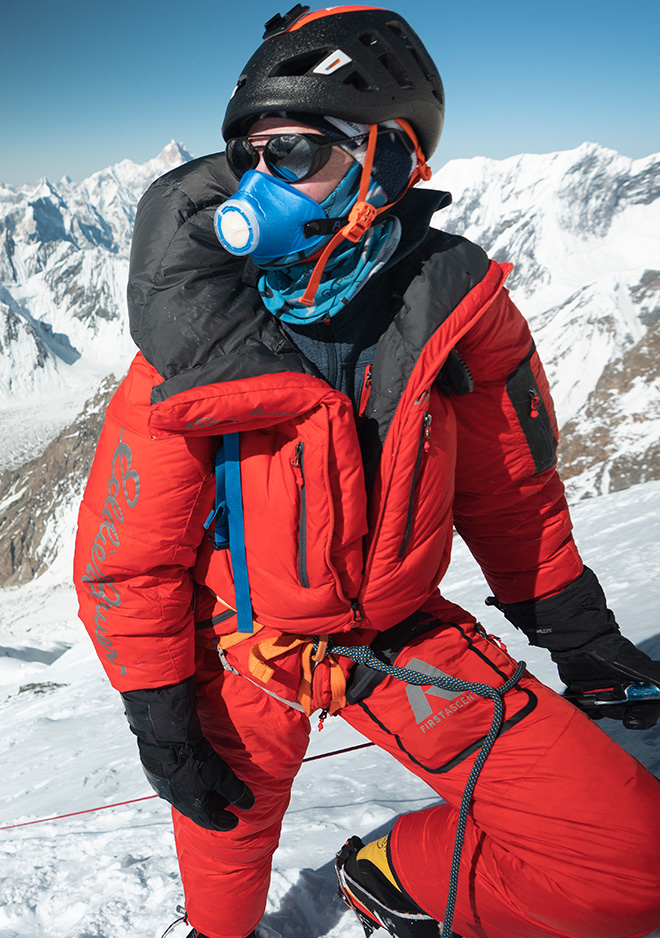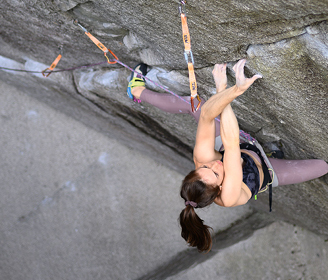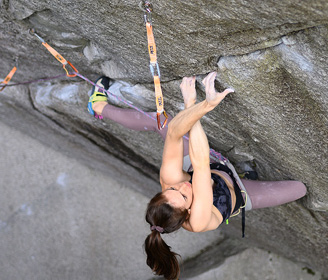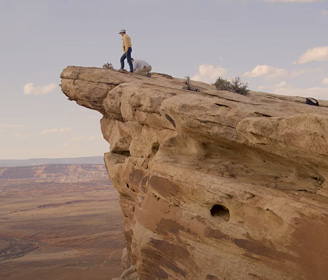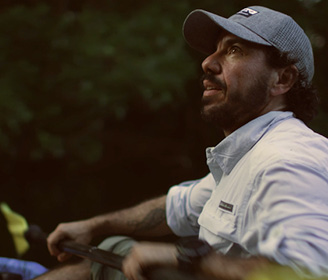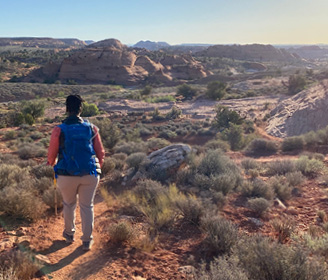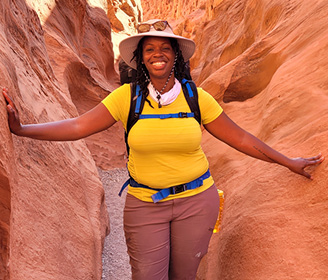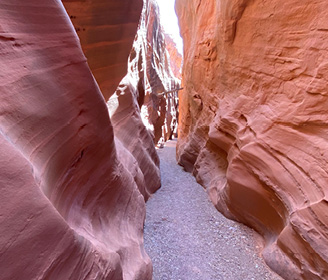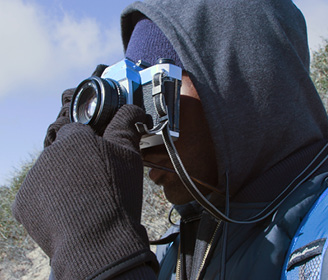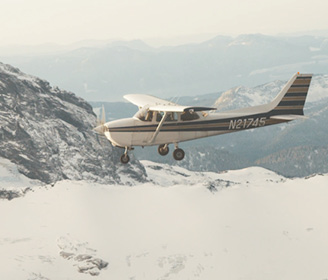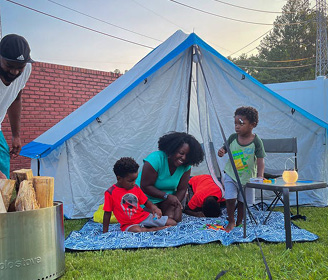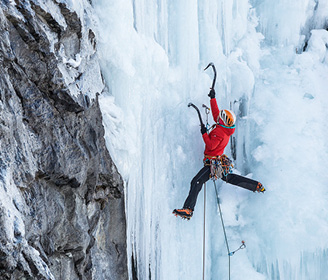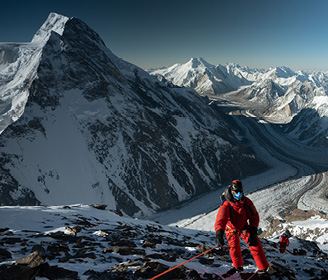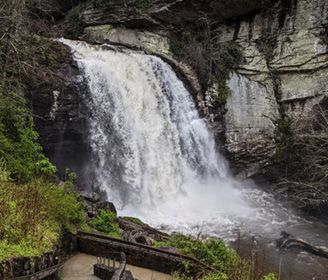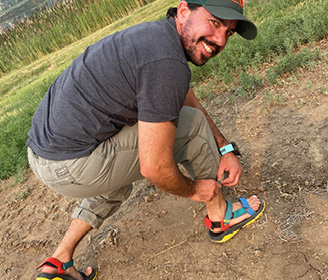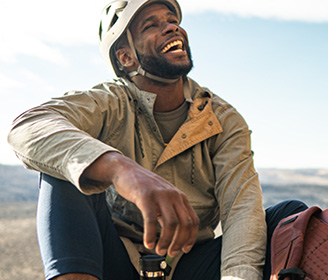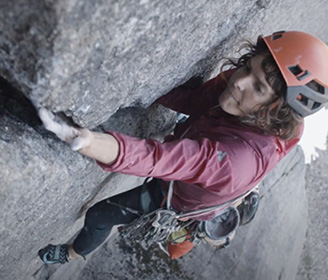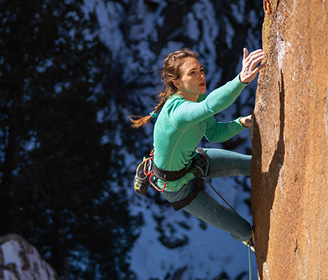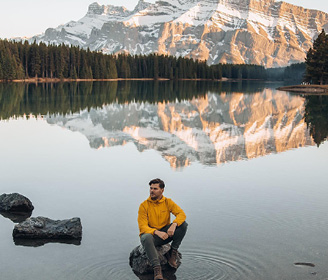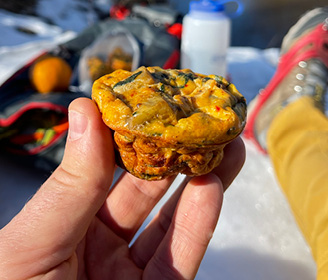Have you ever been interested in backcountry camping but not known where to start or what backcountry camping truly is? Learn all about backcountry camping from a person who has camped in the wilderness all around the world, Eddie Bauer Kayak Athlete Ben Stookesberry.
Watch the video above!
Meet The team
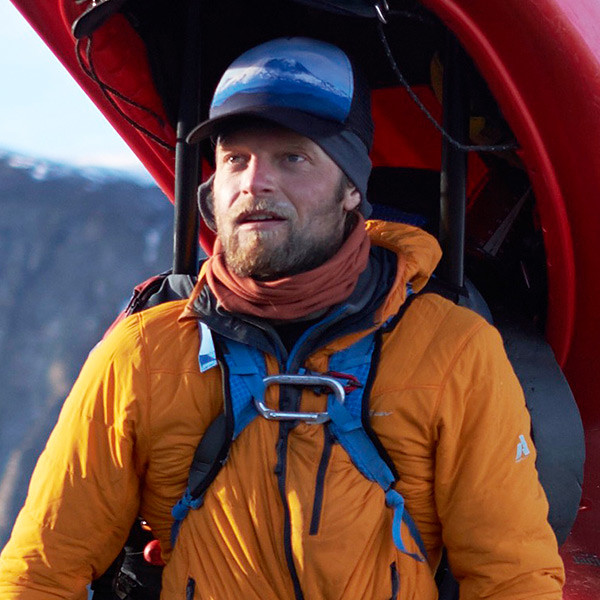
BEN STOOKESBERRY
Eddie Bauer Exploration Guide
Stookesberry has been the expedition instigator for more than 132 first descents on sections of Class V or Class VI rivers in 36 countries. A talented filmmaker and visual storyteller, he won a Best Adventure Film award at the Banff Film Festival for his 2011 film Kadoma and received critical acclaim for Walled In.
What is backcountry camping?
Well that country camping is simply camping in the back country. And in my mind backcountry is defined as any sort of roadless scenario where you’re camping out of a backpack, camping out of a kayak away from a car camping scenario.
What to take backcountry camping?
Well, you’re gonna need food, water and shelter. Shelter comes in the way of your sleeping bag, your tent, tarp, something to keep you out of the elements. Something to keep you dry and keep you warm while you’re out there. ‘Causer you’re also gonna wanna think about hydration and staying hydrated. In dry places you might need to bring along enough water to have available to both consume, wash and cook with for the whole time you’re out. In other places, you’re just gonna need to be concerned with being able to purify the surface water that you might come across. Whether it’s a stream or a lake. So having some kind of a gravity filter or UV pen or iodine or something along those lines. In terms of the food, there’s all sorts of different ways to do it. But I actually find the most rewarding way to eat at night and the best and the healthiest and most delicious way to eat is actually to bring your own food. Bring whole food. Bring veggies. Just go ahead and plan out each of your meals. I tried to minimize my trash as much as possible when I’m out there. For the pack in pack out scenario I pack out as little as I need to.
Where to store food backcountry camping?
First of all you’re gonna wanna keep from smashing your food. You’re gonna wanna keep it cool. And you’re gonna wanna keep it dry. On top of that anytime you can at night, you’re gonna wanna store your food in a place that’s gonna be safe from wildlife. If a fox, or a cat, or a bear comes along and eats all your food, that’s gonna be no fun for anyone. So keeping your food stashed away high in a tree with candle lever system or in a secure, what they call bear proof box is always a good idea and always preferred and oftentimes required in wilderness areas and national parks.
How much water is needed per person when you’re backcountry camping?
The amount of water that you’re gonna need when you’re out backcountry camping is proportional to the number of days or the amount of time that you’re gonna spend out there. They say when you’re working hard and say, hiking up the side of a mountain or paddling hard through a hot climate you’re gonna need about a liter per hour. So in dry conditions you might need eight liter, nine liter per day. And so at about 3.8 liter per gallon, let’s say you almost need about three gallons per day when you’re out backcountry camping. And again, you gotta make sure to fine tune that. But off the top of my head I would say three gallons per day is a pretty good estimate. So that’s quite a bit of water.
What kind of sleeping bag should you use in the backcountry?
Well, I always recommend using a sleeping bag that is okay and still lofts well when it gets wet. So that gives you two options. You either use a synthetic sleeping bag that’s water resistant or you use a storm down that’s also resistant to water. And making sure that you have a sleeping bag that’s absolutely warm enough for the conditions. So if you buy a 20 degree sleeping bag for example, that sleeping bag is really good for sleeping down to about freezing or 32 degrees Fahrenheit. And at 20 degrees, you’re really gonna be at the limit and not at the most comfortable. So always use a sleeping bag that is at least 10 degrees colder than the coldest conditions that you anticipate seeing.
How to choose a campsite when backcountry camping?
Well, there are regulations in choosing campsites when backcountry camping. So it’s always good to read up on the regulations for whatever wilderness area, national park, state park, private area that you’re in. In general you wanna be 100 feet away from surface water. You also wanna be about 100 feet away from any sort of trail so that you maintain that sense of wilderness experience for the other users of the trail. And that you also maintain the water quality of the surface water in the area where you’re camping.
What kind of pack to use for backcountry camping?
Well, in fact you really don’t even need a backpack to go backcountry camping. You can use a kayak and that’s absolutely my favorite way to go backcountry camping. But in terms of the backpack again, using the right backpack for your particular scenario, the number of days that you’re gonna be out. Temperature and the environment that you’re gonna be in is gonna define how large of a pack you need to use for your backcountry camping. But usually a good rule of thumb is use the right backpack for the job. Which means use the pack that can fit all the gear that you need to take with you.
Can I backcountry camp in national wilderness?
Absolutely. Yeah, backcountry camping in wilderness areas is the preferred use of wilderness areas. The non-motorized use camping in the backcountry away from a car, it’s one of the best ways to experience a wilderness on a multi day level. And go through the night, the morning, the evening. I think there’s no better way to experience these beautiful environments than actually spending the night out there and backcountry camping.
What are the things to do while backcountry camping?
Oh my gosh, what can’t you do while backcountry camping. You can write poetry. You can bring your watercolors. You can fish. I go whitewater kayaking between backcountry camping spots along the river. Backcountry camping is quite simply a way to sustain yourself for multiple days away from a road head, away from your vehicle and having all of those essential items with you while you do it. It’s one of the best ways to really take full advantage of your time out in beautiful wilderness areas.
How to prepare for a backcountry camping trip?
It’s certainly a good idea to know what kind of conditions and what kind of environment that you’re going into. How warm is it gonna be during the day? How is it gonna be during the night? How intense is the sun? What sort of footwear you’re gonna need? Do you need hiking boots? Or is it better to have nice light running shoes? Do you need some sort of footwear that can get wet? Do you need to bring a bathing suit with you? Or do you need to bring a down suit with you, for example? So all the preparation goes into knowing exactly what kind of environment that you’re gonna get into and then planning and packing your gear accordingly.
Why are there fees for backcountry camping?
Well, fees for backcountry camping pay the salaries of rangers that are out there, keeping and maintaining the backcountry in the most pristine state. Making sure regulations are followed. Picking up any trash that might have been left behind. And basically keeping this area in as pristine a state as possible. In certain cases it also helps to maintain access to those backcountry areas where the backcountry areas are public in many cases, the app access points are private. And so those user fees are paid simply to maintain the access to those backcountry areas. But in the most part, these fees are fairly minimal compared to fees that you might expect to pay for example, going out to the movie at night in the city. Or certainly going to a professional sports game. These fees are much smaller but are certainly necessary to maintain the high quality and pristine nature of these backcountry areas. Let’s see.
How to not get lost while backcountry camping?
The GPS is really the most foolproof way of not getting lost by backcountry camping. And luckily enough, every single one of you probably have a GPS right now in your pocket in terms of your smartphone. Each one of those smartphones does have a built in GPS. So then at that point, it’s just a matter of getting yourself an appropriate application to chart your course through the backcountry. And an even more simple way of doing it is by simply just staying on the trails. Following a designated trail to a location and not getting off the trail. But once you’re off trail, certainly a GPS and an application to use that GPS is essential to tracking your progress. And not getting lost in the backcountry. Also don’t let your phone smashed on the ground and destroy your GPS like I just did.
Why camp in the backcountry?
Well, camping in the backcountry is quite simply the best way to immerse yourself in a wilderness environment. Away from roads. Away from suburban and urban environments. Away from people and just immersing yourself in the wilderness is an amazingly healing thing to do in terms of clearing our mind, in terms of dealing with stress, and in terms of just rejuvenating for the life that we face on a regular daily basis. To know that these beautiful areas exist. And to know that… To know the beauty of these places, to know the serenity of those places, I think can cross over into the rest of our lives.
How to start backcountry camping?
Well, just like anything, when you start backcountry camping the best thing to do is to start slow and progress up to more complicated endeavors. So start with one night. Start with a known destination where there’s potentially an established camp, for example. That’s much more simple than maybe is even in your ability in order to get the hang of things. In order to figure out how the difference in weight is gonna feel. It is a much different experience from going out for a day hike as opposed to going out for an overnight trip just due to the fact that you’re gonna have to bring along a significant amount more weight. So I think like anything, start slow and then progress as you get more comfortable with it.
What food to take backcountry camping?
Well personally, I love to take healthy food. The nice thing about backcountry camping is, is that once you’re out there… The nice thing and the daunting thing I suppose is that once you’re out there, you are self reliant. And so the food that you brought with you is quite literally the only food that you have with you. Which is sort of a nice thing ’cause you can plan to have healthy meals and maybe not get the munchies like I do and eat too many cookies at night. So I personally like to pack lots of vegetables. I like to eat healthfully. And I also like to pay attention to see if there’s anything that’s available to forage along the way like berries and mushrooms. And so that’s another aspect of the backcountry that is always so rewarding is when you can actually find food out there that’s along the trail or along the river. But yes, bring enough food because it’s never fun to go hungry for a day or two.
What kind of tent is needed for backcountry camping?
Well, it just depends. Are you going backcountry camping in the Himalayas? Are you going backcountry camping in the desert? And both of those situations are gonna require a different sort of tent. Of course, if you’re in the Himalayas you’re gonna need this big beefy tent and structure to keep you safe from the severe storms that happen there. But in the summertime in the Sierra Nevada of California, oftentimes you don’t even need a tent or shelter or anything. You could literally lay your sleeping pad and sleeping bag down on bare rock and enjoy a night under the stars. And that’s one of the most special experiences. There’s certainly alternatives to having a tent like a bivy. Like no shelter at all given the right climate. Or even a hammock in certain places is more ideal than a tent. Say if you’re in the jungles of Colombia, you’re gonna wanna be off the ground. You’re gonna wanna be above any pulling water from rain. And so there’s a lot of different options in terms of shelter and/or just beautiful weather where you don’t even need a shelter.
How to go to the bathroom while backcountry camping?
This is a point that doesn’t often get talked about but it’s super important. Oftentimes along the river we say dilution is the solution. Which means that anytime you go pee you always wanna pee in the water because there’s a lot more water in the river, a tremendous amount more water in the river or even a small stream than is coming out of you. And so peeing into that stream is gonna quickly dilute your pee. It’s not gonna be any sort of major hassle on the fish or anything. And it’s much preferable to actually peeing on sand or peeing on a rock where once the pee actually evaporates it can leave behind a smell, and/or make it toxic for any of the microbiome that lives there. So certainly peeing in the river. And then definitely going number two, waking up and doing your business in the morning. You’re either gonna need to dig a hole in certain wilderness settings or in other wilderness settings where the environment is, it’s a more populated trail. Or a more fragile environment, you’re gonna actually need to take your human waste out with you. And so something as simple as a biodegradable little doggie wag bag that you would scoop up your pet’s poop and put in can work for you. Or oftentimes on the river, camping out of a raft will bring a whole setup that’s actually a makeshift toilet that we bring with us along the river in order to pack out our human waste. But it just depends and again, you’re just gonna wanna look up and buff up on all the regulations for the area that you’re going to.
What to do in an emergency while backcountry camping?
In an emergency situation, in any emergency situation, you’re going to wanna reach out to emergency medical services and/or search and rescue services. And so the first thing you’re gonna wanna do is stabilize the situation and then to contact search and rescue and emergency medical services. And that can be done via your two way SATCOM, that’s always nice to bring along with you if there’s no cell service in the backcountry. Which is a beautiful thing to detach from the outside world. But it’s also nice to have a backup plan in terms of how you’re gonna contact search and rescue if you do have a problem out there. And certainly, if you don’t have satellite comms, you can always try to send a smoke signal. If you had something like a flare gun with you, you can try that. A whistle can oftentimes be useful in the backcountry to try to alert any nearby users. If you don’t have any of those things available and there’s no one else around. Sometimes you’re really gonna need to just hike out for help in order to get the emergency taken care of. Get that person evacuated to a medical facility. Okay.
So what are tips for reducing weight while backcountry camping?
A lot of backpacks have extra buckles, extra straps. And not only goes for backpacks, but also camera bags and any sort of bag within a bag, you’re gonna wanna take a look at and see if you can remove additional straps that you don’t actually need. In the ideal scenario, every single piece of gear and every single stitch of fabric that makes up that gear should have some sort of direct use. And so just doing a full audit of every piece of gear that you have, and each one of the bags within the bags. That being said, you never wanna go out with too little food or a sleeping bag that’s not warm enough. So those things I always tend to go a little heavier than a little lighter on just to be safe.
How to stay safe while backcountry camping?
Let’s see, staying safe while backcountry camping is absolutely dependent upon moving slowly, moving methodically, checking in with all the people in your party, and just minimizing risk as best you can. Certainly planning has a lot to do with it as well. Making sure you have all the right gear before you go. Making sure that emergency contacts know how long you’re gonna be out. Know the route that you’re gonna follow. But also just keeping the lines of communication open within your group. Making sure that everybody’s on the same page. Everybody’s carrying all the gear and the food that they need to be carrying. And that everybody’s moving along at a pace that they can sustain over the course of your trip. Just making sure that everybody is communicating and letting each each other in the group know how they’re doing can go a long way to eliminating a lot of the risk and a lot of the problems that people have out in the backcountry. Let’s see,
What are Leave No Trace rules for backcountry camping?
In my mind, Leave No Trace simply means exactly that. Leave no trace. In a lot of scenarios in the backcountry that even includes your human waste. Of course, we can always pee in the river. But we’re gonna wanna take out our own human waste. We’re gonna wanna take out any trash that we create. It’s essentially leaving the place behind exactly as we found it, if not in an even more pristine state. It just means being good stewards of our wilderness and leaving it as pristine as possible for the next user that’s gonna come behind us.
How to find places to go backcountry camping?
The best way to find places to go backcountry camping is simply to look for our public spaces. For service land, BLM land, national parks, wilderness. These are the places that are the best for backcountry camping. These beautiful wide open spaces away from roads. And the best way to find those places is do an Internet search. Or just simply get a map that shows you the public spaces and also the public roadless spaces that are all over our country and that we’re so blessed to have.
Do I need to be a survivalist to go backcountry camping?
You do not need to be a survivalist to go backcountry camping. But backcountry camping is an incredible way to learn these skills of self sufficiency, self reliance, and being able to sustain yourself without the creature comforts. The suburban and urban creature comforts that so many of us are surrounded by on a daily basis. You don’t need to be a survivalist. But I think inevitably, we’ll all learn a bit of survivalism while we’re out there backcountry camping. It’s just rejuvenating for the life that we face on a regular daily basis to know that these beautiful areas exist. To know the beauty of these places. To know the serenity of those places I think can cross over into the rest of our lives. Final thoughts about backcountry camping. I’d recommend everyone do it at least once. And do it at your own pace if at all possible. You can simply just find these beautiful places that exist across our country and go immerse yourself in it. And literally just taking a few precious steps from the end of the road with your food, water and shelter on your back can make all the difference in terms of your experience in these wilderness places.

